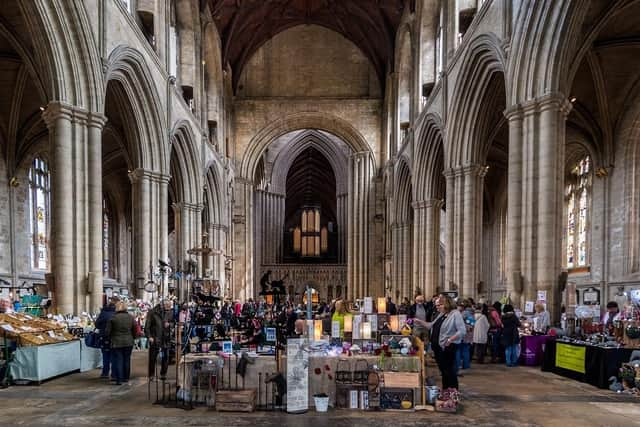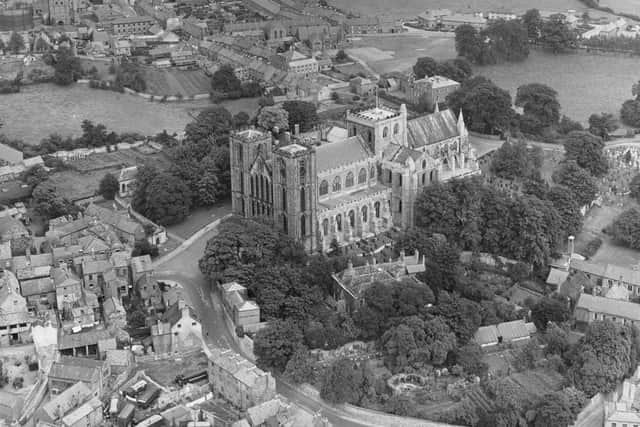Ripon Cathedral: History behind one of Yorkshire’s oldest buildings in one of England’s smallest cities with a population of under 160,000
Ripon Cathedral, also named the Cathedral Church of St Peter and St Wilfrid, was founded as a monastery by monks in the 660s and was founded a second time as a Benedictine monastery by St Wilfrid in 672.
It is well known for its gothic west front in the Early English style and is thought to be one of the best of its kind, along with the Geometric east window. The cathedral is Grade I-listed.
Advertisement
Hide AdAdvertisement
Hide AdThe crypt of Wilfrid’s church is seven centuries old and is an early example of Christian architecture.


History behind Ripon Cathedral
There has been a church on the site of the cathedral since 672 and was replaced with the previous timber church of the monastery at Ripon by Saint Wilfrid.
Residents, church goers have been going to worship and pray at the cathedral for more than 1,300 years.
Ripon Cathedral was one of England’s first stone churches on the site and was renewed every day.
Advertisement
Hide AdAdvertisement
Hide Ad

The current church is the fourth to have been built on the site between the 13th and 16th centuries; Saint Wilfrid brought stonemasons, plasterers and glaziers from France and Italy to build his great basilica in AD 672.
In 1836 the church became the cathedral for the Diocese of Ripon.
The high altar of the church is where Saint Wilfrid was buried.
Following a second ministry, it was closed down in 1069 by William the Conqueror and Thomas of Bayeux, first Norman Archbishop of York, then initiated a construction of a third church, traces of which were incorporated into the later chapter house of Roger’s minster.
Advertisement
Hide AdAdvertisement
Hide AdThe Early English style west front was implemented in 1220, its twin towers originally built with wooden spires and lead.
The east window was built between 1286 to 1288 and 1330 as part of a reconstruction of the choir.
The War of the Roses disrupted prominent rebuilding, but resumed after the accession of Henry VII and the restoration of peace in 1485.
The crossing tower was reconstructed after an earthquake destroyed it in 1450 though was never finished.
Advertisement
Hide AdAdvertisement
Hide AdThe Ripon School of Carvers carved the misericords at Beverley Minster and Manchester Cathedral, but in 1547 before the work was completed, Edward VI dissolved Ripon’s college of canons.
In 1604 James I issued his Charter of Restoration and during the Civil War, most of the stained glass was destroyed and some of the statues were destroyed.
The organ by Harrison and Harrison is a rebuild of the original Lewis instrument dating back to 1878.
Famous organists have played the organ including Charles Harry Moody and Ronald Edward Perrin.
A row of 10 bells were added in 1932 and three additional bells were installed in 2008.
Comment Guidelines
National World encourages reader discussion on our stories. User feedback, insights and back-and-forth exchanges add a rich layer of context to reporting. Please review our Community Guidelines before commenting.
